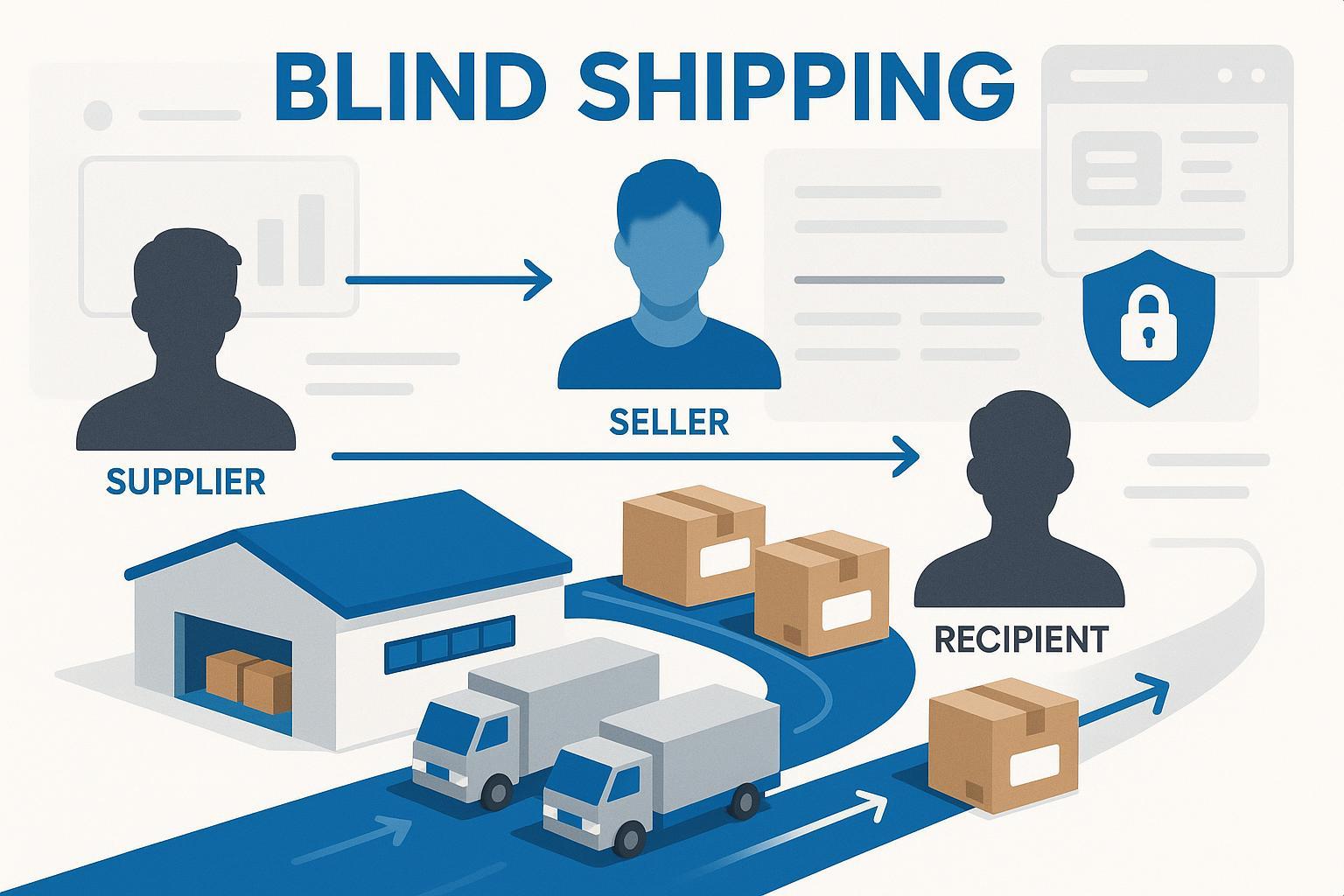Understanding Blind Shipping: A Key Strategy for E-Commerce Success

What Is Blind Shipping?
Blind shipping is a fulfillment method in eCommerce and logistics where the identity of the original supplier or shipper is deliberately concealed from the end recipient. In other words, products are shipped directly from the supplier or a third-party logistics provider (3PL), but the recipient only sees the seller or retailer’s details on shipping documentation and packaging—not the true source of the goods. This strategy is widely used to protect sourcing relationships and prevent customers or retailers from bypassing intermediaries (Shopify, ShipBob).
How Does Blind Shipping Work?
The core mechanics involve creating a custom shipping label that displays the seller’s (retailer or distributor) address instead of the manufacturer’s or supplier’s. The process typically works as follows:
- Order Received: The seller receives and processes a customer order.
- Supplier/3PL Fulfillment: The seller forwards order details to the supplier or 3PL.
- Anonymized Labeling: The supplier/3PL ships the package directly to the end customer, using a label or packing slip that omits their own identity—showing only the seller’s address and branding.
- Customer Receives Package: The customer receives the goods, unaware of the real supplier.
Variants include double-blind shipping, where both the sender and recipient identities are concealed—often for high-confidentiality B2B transactions.
Why Use Blind Shipping?
- Protect supplier relationships and pricing.
- Maintain brand exclusivity.
- Enable white label or private label business models.
- Prevent retailer or consumer from sourcing directly.
This is especially useful in dropshipping, B2B distribution, and multi-tiered eCommerce setups where supply chain confidentiality is critical.
Comparative Table: Blind Shipping, Double-Blind, Dropshipping, and White Label Shipping
| Fulfillment Model | Supplier ID Hidden? | Buyer ID Hidden? | Branding Shown | Typical Use Case |
|---|---|---|---|---|
| Blind Shipping | Yes | No | Seller/Neutral | D2C brands, distributors protect sources |
| Double-Blind Shipping | Yes | Yes | Fully Neutral | B2B deals, high-confidentiality transactions |
| Dropshipping | Sometimes | No | Seller/Neutral | E-commerce, direct-to-customer fulfillment |
| White Label Shipping | Sometimes | No | Neutral/Custom | Private label, branded third-party goods |
For deeper dives: see What is Dropshipping?, Third-Party Logistics (3PL), White Label Shipping
Real-World Scenarios
D2C Example: An online apparel brand outsources production to a manufacturer. The 3PL ships directly to customers—with the retailer’s logo on packaging—to ensure buyers don’t contact the manufacturer directly or source from alternative suppliers.
B2B Example: A distributor supplies electronics to a large retail chain. To protect exclusive sourcing deals, the distributor uses blind shipping so the retailer cannot identify or approach their manufacturer partners.
Key Risks and Compliance Considerations
- Returns Complexity: When customers return goods, extra coordination is needed to maintain supplier anonymity. Mishandling may expose the supplier or create confusion in restocking.
- Regulatory Pitfalls: Customs or cross-border shipments may legally require disclosure of the real shipper, limiting true anonymity.
- Documentation & Communication: Clear and accurate documentation is essential. Errors can result in shipment delays or disclosure of confidential partners.
Practitioner Checklist
- Confirm carrier/documentation compliance before adopting blind shipping.
- Set up automated labeling systems integrated with your order management software.
- Train fulfillment staff on returns workflows that maintain confidentiality.
- Regularly audit shipment paperwork for leaks or mislabeling.
Conclusion & Further Reading
Blind shipping is a strategic tool for eCommerce and supply chain confidentiality—empowering both D2C brands and B2B intermediaries to safeguard their networks and business models. When implemented well, it can form the backbone of secure, scalable, multi-layered fulfillment. To deepen your understanding, explore third-party logistics (3PL), dropshipping models, and white label fulfillment best practices.